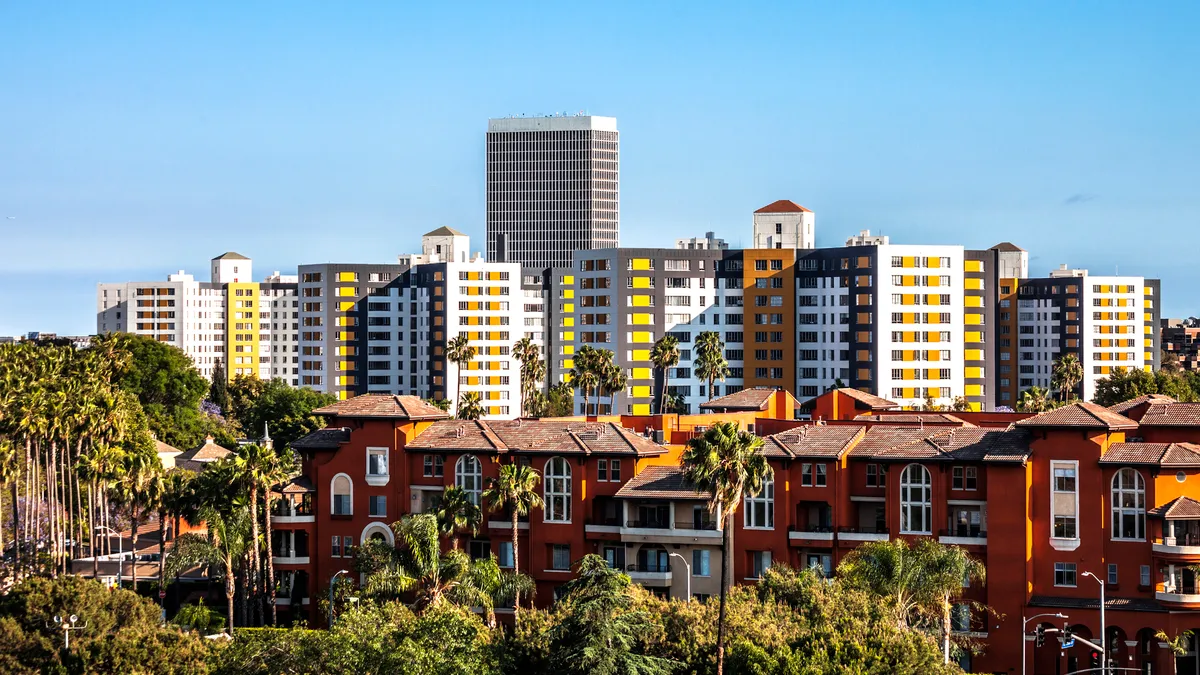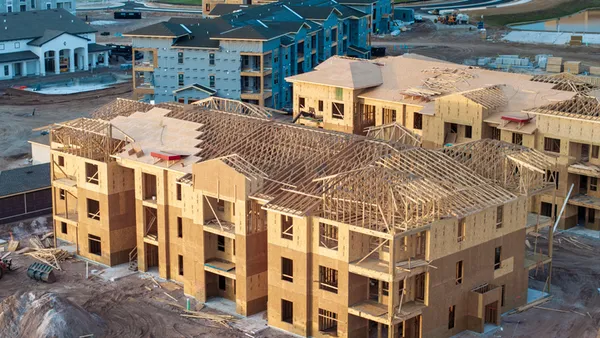The national average multifamily rent rose by $5 between February and March, up to $1,755, according to Yardi Matrix’s latest National Multifamily Report. While this aligns with short-term positive rent growth — up 0.4% over the first quarter of 2025 — the year-over-year rent growth rate has fallen 20 basis points to 1.0% over this same period.
Rent growth remains strong in most gateway markets, the report said. New York City continues to lead the major metros with 5.5% rent growth YOY, while Chicago is in second place at 3.7%. Only San Francisco falls below the 1.0% average at 0.8% YOY. The national occupancy rate was 94.5% in February, unchanged for three months. (Occupancy rates are current to the previous month.)
| Market | YOY rent growth, March 2025 | YOY rent growth, February 2025 | Difference |
|---|---|---|---|
| New York City | 5.5% | 5.6% | -0.1 |
| Chicago | 3.7% | 3.6% | 0.1 |
| Kansas City, Missouri | 3.7% | 4.1% | -0.4 |
| Columbus, Ohio | 3.5% | 3.8% | -0.3 |
| Philadelphia | 3.2% | 3.1% | 0.1 |
| Indianapolis | 3.1% | 3.2% | -0.1 |
| Detroit | 2.7% | 3.5% | -0.8 |
| New Jersey | 2.6% | 3.4% | -0.8 |
| Baltimore | 2.4% | 2.4% | 0 |
| Twin Cities | 2.1% | 2.2% | -0.1 |
SOURCE: Yardi Matrix
Single-family rents also rose $5 from March to April, up to $2,169. YOY rent growth has fallen flat, down from 15% YOY in February 2022.
The multifamily market is showing overall positive performance in the start of the year, despite policy changes from the current presidential administration and overall economic uncertainty, according to Yardi. Rent increases through March are weaker than the historical average — excluding the post-pandemic outlier period — but not by much.
Yardi attributes this to slow growth in high-supply markets, including Austin, Texas; Denver; Phoenix; and Nashville, which have added 5.0% to their apartment stock over the past year. These markets are expected to see the same amount of growth in 2025 before tapering off in 2026.
Economic volatility is high given the current tariff environment, layoffs and low consumer confidence, and cuts to immigration are set to affect demand to a degree. However, investors are confident and multifamily capital markets are liquid, the report said.
“A large volume of multifamily loans are coming due in 2025, including many that were previously extended,” the report said. “Lenders are eager to remove such loans from their balance sheets ... That creates opportunities for investors to provide takeout financing or buy the loans from banks.”











